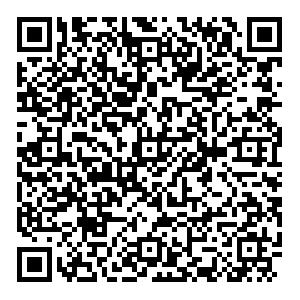|
[1]
|
刘爱生. (2018). 国外学术评价体系中的“网文”: 兴起、行动与挑战. 清华大学教育研究,39(05),90−98.
|
|
[2]
|
刘春丽. (2016). Altmetrics指标在科研评价与管理方面的应用. 科学学与科学技术管理,37(06),13−21.
|
|
[3]
|
刘烜贞, 湛乐. (2017). 替代计量指标评价科研成果社会影响的研究. 情报探索,2017(10),35−38. doi: 10.3969/j.issn.1005-8095.2017.10.007
|
|
[4]
|
吉本斯. (2011). 知识生产的新模式当代社会科学与研究的动力学(陈洪捷, 沈文钦等译). 北京: 北京大学出版社.
|
|
[5]
|
王楠, 罗珺文. (2017). 英国高校“科研卓越框架”的改革与创新. 中国行政管理,2017(10),141−145. doi: 10.3782/j.issn.1006-0863.2017.10.24
|
|
[6]
|
武学超. (2015). 大学科研非学术影响评价及其学术逻辑. 中国高教研究,2015(11),23−28.
|
|
[7]
|
Baker, D., Clements, A., Grout, C., Kerridge, S., McCutcheon, V., Newnham, H. (2017). CASRAI-UK: Using the CASRAI Approach to Develop Standards for Communicating and Sharing Research Information in the UK, 13th International Conference on Current Research Information Systems, CRIS2016. Procedia Computer Science, (106), 100−103.
|
|
[8]
|
Beise, M., & Stahl, H. (1999). Public research and industrial innovations in Germany. Research Policy, 28(4), 397−422. doi: 10.1016/S0048-7333(98)00126-7
|
|
[9]
|
Benneworth, P. (2017). We need better understanding of 'good' research impacts. Retrieved from https://www.ideas-idees.ca/blog/we-need-better-understanding-good-research-impacts
|
|
[10]
|
Bornmann, L. (2014). Do altmetrics point to the broader impact of research?An overview of benefits and disadvantages of altmetrics. Journal of informetrics, 8(4), 895−903. doi: 10.1016/j.joi.2014.09.005
|
|
[11]
|
Bornmann, L. (2013). What is societal impact of research and how can it be assessed? A literature survey. Journal of The American Society of Information and Technology, 64(2), 217−233. doi: 10.1002/asi.22803
|
|
[12]
|
Bozeman, B., & Sarewitz, D. (2001). Public value mapping and science policy evaluation. Minerva, 49(1), 1−23.
|
|
[13]
|
Burke, J., Bergman, J., & Asimov, L. (1985). The Impact of Science on Society. Washington DC: National Aeronautics and Space Administration. In Bornmann, L. (2013). What is societal impact of research and how can it be assessed? A literature survey. Journal of The American Society of Information and Technology, 64(2), 217−233.
|
|
[14]
|
Bush, V. (1945). Science the Endless Frontier. Washington DC: United States Government Printing Office.
|
|
[15]
|
Buxton, M. (2011). The payback of "Payback": Challenges in assessing research impact. Research Evaluation, 20(3), 259−260. doi: 10.3152/095820211X13118583635837
|
|
[16]
|
De, J. S., Barker, K., Cox, D., Sveinsdottir, T., & Van, D. B. P. (2014). Understanding societal impact through productive interactions: ICT research as a case. Research Evaluation, 23(2), 89−102. doi: 10.1093/reseval/rvu001
|
|
[17]
|
Department of Education, Science and Training. (2005). Research quality framework: Assessing the quality and impact of research in Australia. (Issue paper). Canberra: Commonwealth of Australia.
|
|
[18]
|
Donovan C. (2008). The Australian Research Quality Framework: A live experiment in capturing the social, economic, environment, and cultural returns of publicly funded research. New Directions for Evaluation, 2008(118), 47−60. doi: 10.1002/ev.260
|
|
[19]
|
Donova, C. (2010). Impact is a Strong Weapon for Making an Evidence-Based Case Study for Enhanced Research Support but a State-of-the-Art Approach to Measurement is Needed. Retrieved from: http://blogs.lse.ac.uk/impact of social sciences/tag/claire-donovan.
|
|
[20]
|
Drooge, L et al. (2010). Evaluating the societal relevance of academic research: A guide. . Retrieved from: http://repository.tudelft.nl/assets/uuid:8fa07276-cf52-41f3-aa70.
|
|
[21]
|
Duryea, M., Hochman, M., & Parfitt, A. (2007). Measuring the impact of Reasearch. Research Global, 2007(27), 8−9.
|
|
[22]
|
Gibbons, M et al. (1994). The new production of knowledge: The dynamics of science and research in contemporary societies. London: Sage.
|
|
[23]
|
Health Economics Research Group, Office of Health Economics, RAND Europe. (2008). Medical research: What’s it worth? Estimating the economic benefits from medical research in the UK. Evaluation Forum. London: Office of Health Economics.
|
|
[24]
|
KNAW, VSNU, NWO. (2014). Standard Evaluation Protocol2015-2021, Protocol for Research Assessment in the Netherlands (Amended Version, 2016). Amsterdam.
|
|
[25]
|
Martínez, E. C., Gallar, J. M. (2010). Social Impact Assessment Methods for Research and Funding Instruments Through the Study of Productive Interactions(SIAMPI). Retrieved from: http://www.siampi.eu/Content/SIAMPI/Report%20SIAMPI%20Workshop.pdf.
|
|
[26]
|
Mansfield, E. (1991). Academic research and industrial innovation. Research Policy, 20(1), 1−12. doi: 10.1016/0048-7333(91)90080-A
|
|
[27]
|
Martin, B. R. (2011). The Research Excellence Framework and the 'impact agenda': Are we creating a Frankenstein monster?. Research Evaluation, 20(3), 247−254. doi: 10.3152/095820211X13118583635693
|
|
[28]
|
Meulen, B., Rip, A. (2000). Evaluation of societal quality of public sector research in the Netherlands. Research Evaluation, 9(1), 11−25. doi: 10.3152/147154400781777449
|
|
[29]
|
Molas-Gallart, J., Salter, A., Patel, P., Scott, A., & Duran, X. (2002). Measuring Third Stream Activities: Final Report to the Russel Group of Universities. SPRU-Science and Technoly Policy Research, 2002(85).
|
|
[30]
|
Penfield, T et al. (2014). Assessment, evaluations, and definitions of research impact: a review. Research Evaluation, (23), 21−32.
|
|
[31]
|
Salter, A. J., & Martin, B. R. (2011). The economic benefits of publicly funded basic research: A critical review. Research Policy, 30(3), 509−532.
|
|
[32]
|
Smith, R. (2011). Measuring the social impact of research. British Medical Journal, 3237312, 528.
|
|
[33]
|
Toole, A. A. (2011). The impact of public basic research on industrial innovation: Evidence from the pharmaceutical industry. Research Policy, 41(1), 1−12.
|
|
[34]
|
University of York. (2015). What is research impact?. Retrieved from https://www.york.ac.uk/staff/research/research-impact/impact-definition.
|
|
[35]
|
Van Vught, F. A., & Ziegele, F. (2011). U-Multirank: design and testing the feasability of a multidimensional global university ranking: Final report. Brussels: Consortium for Higher Education and Research Performance Assessment.
|

 点击查看大图
点击查看大图




 下载:
下载: